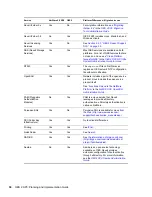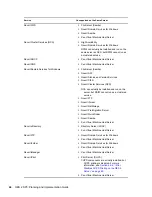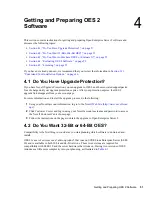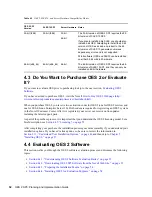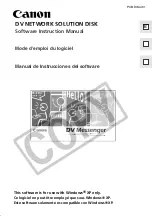
Planning Your OES 2 Implementation
37
3.9.8 Do Not Upgrade to eDirectory 8.8 Separately
If you are running OES 1 SP2, do not upgrade to eDirectory 8.8 independently of upgrading to OES
2 SP3.
For example, do not upgrade from eDirectory 8.7.3 to eDirectory 8.8.2 through the oes-edir88 patch
channel prior to upgrading to OES 2 SP3. Doing so causes configuration problems that the OES 2
SP3 install is not designed to handle.
3.9.9 Follow the Instructions for Your Chosen Platforms
Although installing OES 2 services on Linux or NetWare is a straightforward process, the
installation processes are platform-specific, requiring different sets of media and different
installation programs.
3.9.10 If You’ve Ever Had OES 1 Linux Servers with LUM and
NSS Installed
Having NSS volumes on OES servers requires certain system-level modifications, most of which are
automatic. For more information, see
Appendix I, “System User and Group Management in OES 2
SP3,” on page 259
.
However, as OES has evolved, some initially defined conventions regarding system Users have
needed adjustment. Be sure to read the information and follow the instructions in this section if your
network has ever included an OES 1 Linux server with both LUM and NSS installed.
“NetStorage, XTier, and Their System Users” on page 37
“An NSS Complication” on page 37
“eDirectory Solves the Basic Problem” on page 38
“ID Mismatches on OES 1” on page 38
“The OES 1 Solution: The nssid.sh Script” on page 38
“OES 2 SP1 or Later Requires a New Approach” on page 38
“The OES 2 Solution: Standardizing the UIDs on all OES servers” on page 38
NetStorage, XTier, and Their System Users
By default, certain OES services, such as NetStorage, rely on a background Novell service named
XTier.
To run on an OES server, XTier requires two system-created users (named
novlxsrvd
and
novlxregd
) and one system-created group that the users belong to (named
novlxtier
).
An NSS Complication
The two system users and their group are created on the local system when XTier is installed. For
example, they are created when you install NetStorage, and their respective UIDs and GID are used
to establish ownership of the service’s directories and files.
For NetStorage to run, these XTier users and group must be able to read data on all volume types
that exist on the OES server.
Содержание OPEN ENTERPRISE SERVER - CONVERSION GUIDE 12-2010
Страница 12: ...12 OES 2 SP3 Planning and Implementation Guide...
Страница 24: ...24 OES 2 SP3 Planning and Implementation Guide...
Страница 50: ...50 OES 2 SP3 Planning and Implementation Guide...
Страница 74: ...74 OES 2 SP3 Planning and Implementation Guide...
Страница 78: ...78 OES 2 SP3 Planning and Implementation Guide...
Страница 80: ...80 OES 2 SP3 Planning and Implementation Guide...
Страница 96: ...96 OES 2 SP3 Planning and Implementation Guide...
Страница 146: ...146 OES 2 SP3 Planning and Implementation Guide...
Страница 176: ...176 OES 2 SP3 Planning and Implementation Guide...
Страница 210: ...210 OES 2 SP3 Planning and Implementation Guide...
Страница 218: ...218 OES 2 SP3 Planning and Implementation Guide...
Страница 226: ...226 OES 2 SP3 Planning and Implementation Guide...
Страница 234: ...234 OES 2 SP3 Planning and Implementation Guide...
Страница 236: ...236 OES 2 SP3 Planning and Implementation Guide...
Страница 244: ...244 OES 2 SP3 Planning and Implementation Guide...
Страница 246: ...246 OES 2 SP3 Planning and Implementation Guide...
Страница 250: ...250 OES 2 SP3 Planning and Implementation Guide...
Страница 254: ...254 OES 2 SP3 Planning and Implementation Guide...
Страница 258: ...258 OES 2 SP3 Planning and Implementation Guide...
Страница 284: ...284 OES 2 SP3 Planning and Implementation Guide...
Страница 286: ...286 OES 2 SP3 Planning and Implementation Guide...
Страница 294: ...294 OES 2 SP3 Planning and Implementation Guide...








